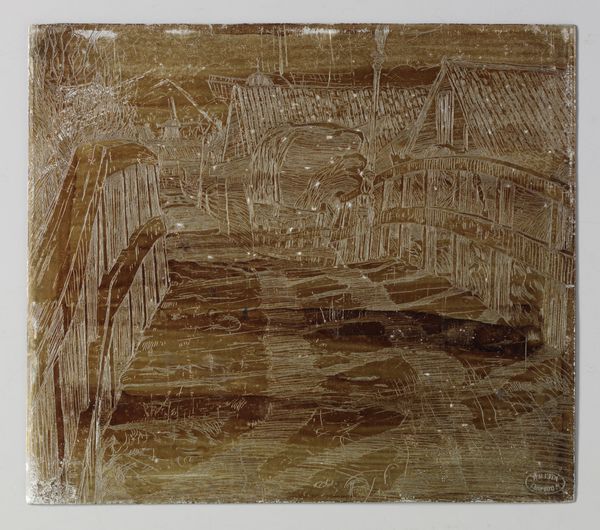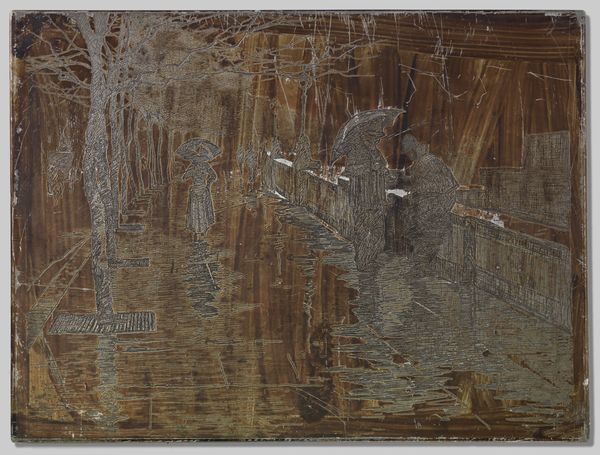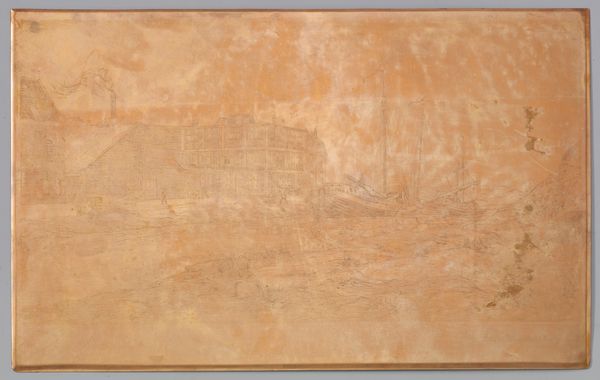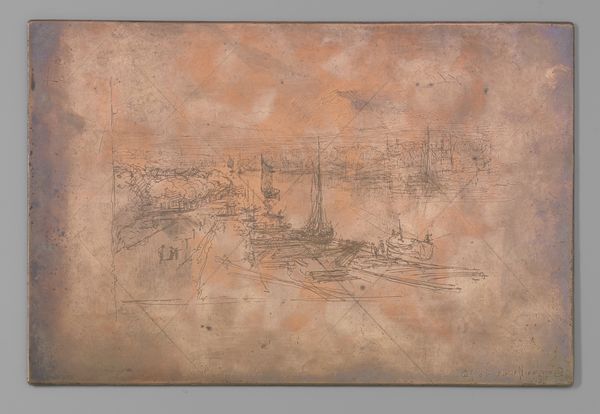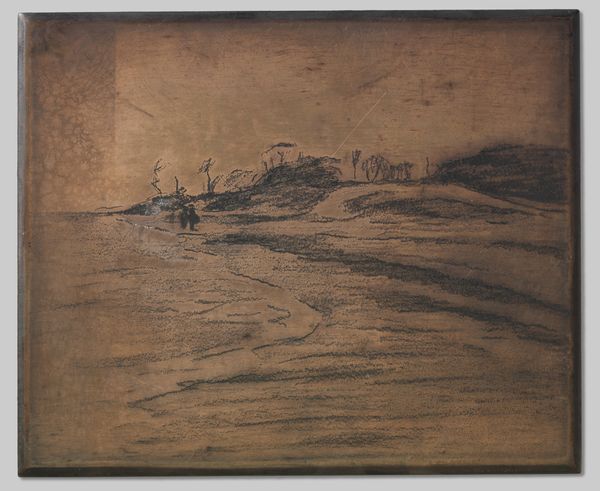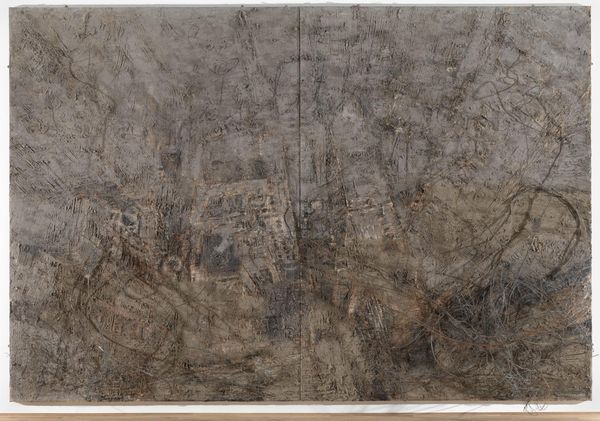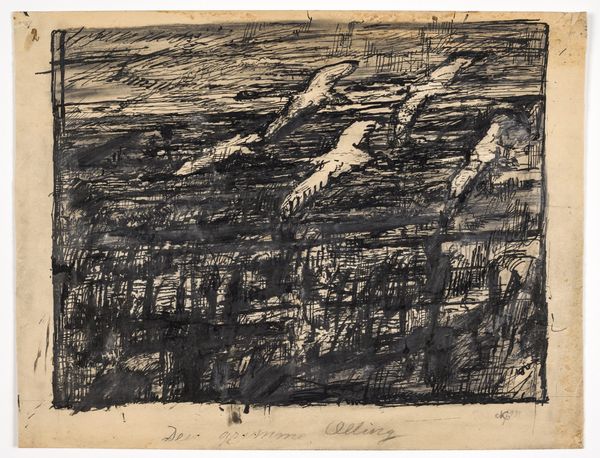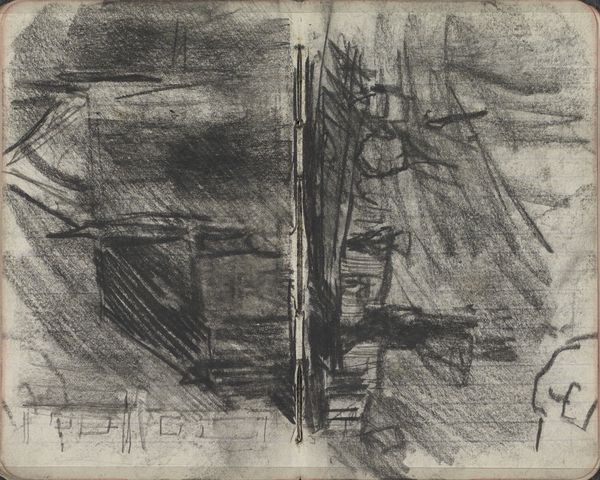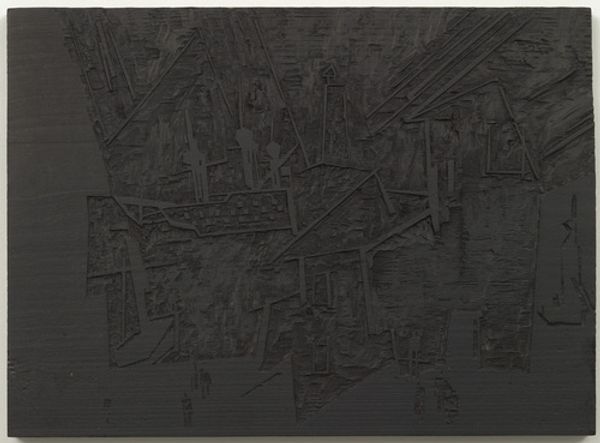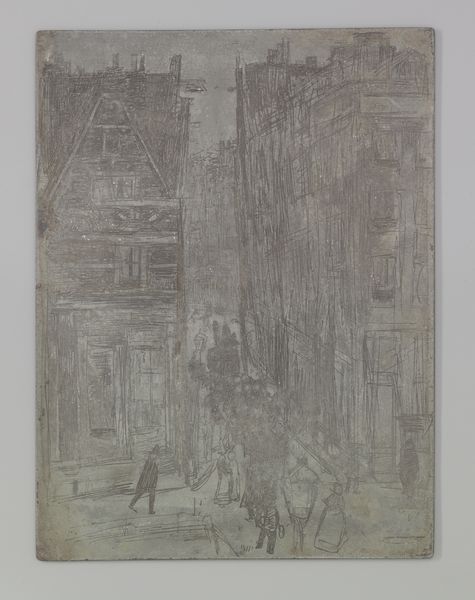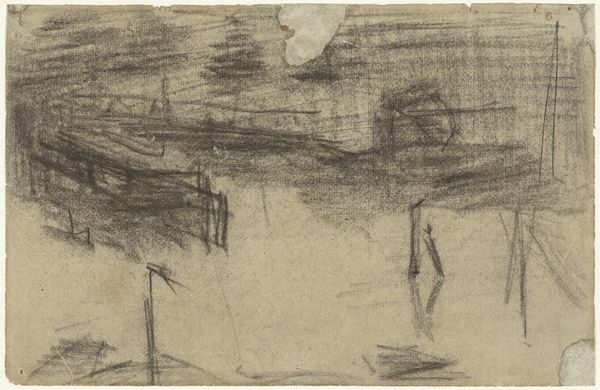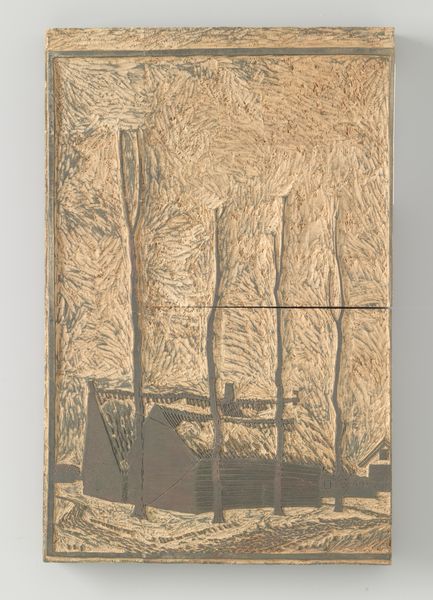
drawing, paper, ink
#
drawing
#
ink painting
#
landscape
#
figuration
#
paper
#
ink
#
line
#
mixed medium
#
watercolor
Dimensions: height 175 mm, width 230 mm
Copyright: Rijks Museum: Open Domain
Editor: This ink and watercolor drawing, "Schepen in haven," or "Ships in Harbor," was created in 1890 by Floris Verster. I find the overall effect quite textured and almost dreamlike; it's fascinating how much information he conveys with such simple lines. What's your take on it? Curator: Well, considering it through a materialist lens, the very choice of ink and paper over something like oil on canvas speaks volumes. It democratizes the process. This isn't some grand commission for a wealthy patron. We see the direct relationship between artist and material; the labor is transparent, almost immediate. How does that materiality influence your perception? Editor: That's interesting; I hadn't thought of it that way. The immediacy you mention... does that have something to do with the industrialization of art materials at the time? Curator: Precisely! Cheaper paper and inks, and the burgeoning print market, were all transforming artistic production. Suddenly, the artist isn't just creating "high art" but also contributing to a visual culture that reached a far broader public. We need to ask ourselves, who was this intended for? How was it distributed and consumed? Was this piece part of a broader production – were there other similar pieces he produced, and if so how were they all exhibited? Editor: It really changes how I see the "simplicity" of the lines. It’s not just stylistic but perhaps an economic or social choice as well? Curator: Exactly. And consider the subject - the ships. They're not romanticized, but appear as working vessels in a harbor, nodes within a system of trade and labor. Editor: This has opened up a whole new perspective for me. Thinking about the social and economic context of the materials used makes me appreciate the artwork on a deeper level. Curator: It’s about recognizing the artwork as a product of its time, shaped by and contributing to a specific material reality. Hopefully, that framework provides a way for viewers to connect and to understand and analyze artworks that move beyond taste, value or genius, into questions about material production, economics and distribution.
Comments
No comments
Be the first to comment and join the conversation on the ultimate creative platform.
